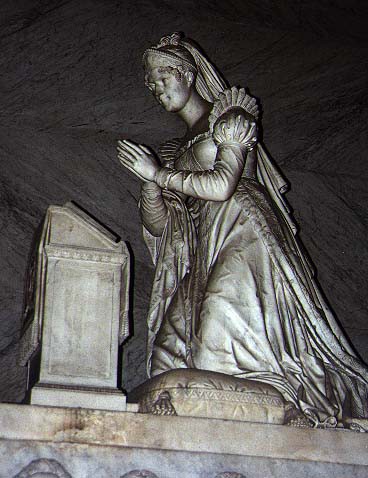Saint-Pierre-Saint-Paul, the ninth-century parish church of Rueil-Malmaison, is the final resting place of the Empress Josephine and her daughter, Queen Hortense. The building itself however was altered many times over the centuries before its final restoration by Napoleon III in 1857.
Josephine died in Malmaison on 29th May, 1814, and was buried four days later on 2nd June in the presence of a large assembly. Since etiquette forbade Josephine's children, Eugène and Hortense, from leading the cortège, this duty was left to Hortense's children. They were followed by the Tzar's representative, General Sacken, the Duke of Mecklenburg, the Grand-Duke of Bade, and a great many generals and marshals of the Empire. The inhabitants of Rueil, deeply distressed by her demise, brought up the rear.
In 1825, Eugène and Hortense had a funeral monument erected in memory of their mother in chapelle Saint-Nicholas to the right-hand side of the choir. The pedestal – made of white marble and containing body of the Empress – was designed by Berthault. The statue of Josephine, in the pose immortalized by David in his painting of the coronation, was carved by Cartelier. Next to this is the tomb of Count Tascher de la Pagerie, Josephine's uncle and the governor of Martinique.
In the chapel to the left of the choir there is a cenotaph, designed by the architect Lacroix and the sculptor Barre, which was placed there in 1858 by Napoleon III in memory of his mother, Queen Hortense. As for her body, that lies in an antique-style sarcophagus in the crypt directly under the monument.
The main altar is decorated with a bas-relief carved by François Anguier for the church of the Val de Grâce in 1667. Bought by Napoleon I for the chapel in the Malmaison château, this bas-relief was donated to Saint-Pierre-Saint-Paul by the banker Hagermann in 1837. Also of note is the magnificent organ case made by the Florentine sculptor Baccio d'Agnolo and donated by Napoleon III in 1868.
Church of Saint-Pierre-Saint-Paul


